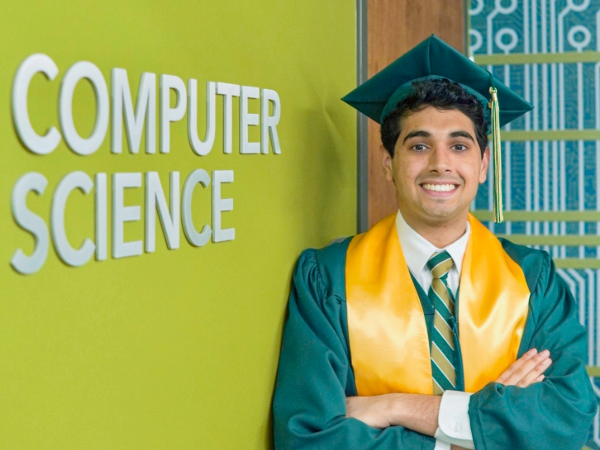The answer is GPU, which stands for “Graphics Processing Unit.” It is a kind of specialized hardware designed to deliver massive computational power. Through GPUs, we are able to power ChatGPT, build supercomputers, and pursue complex deep machine learning models.
GPUs can be found in more places than you might think. Almost all computing devices have a certain kind of GPU, including the smartphone in your pocket. Specifically, your phone is equipped with GPUs to enable on-device machine learning for processing privacy-sensitive data such facial recognition for unlocking your phone. GPUs can also be found in personal computers, making it possible to enjoy games and edit videos, among other things.
Given how much GPUs touch our lives, you may be interested in learning to program GPUs and conducting dynamic research at an R1 institution with the goal of finding a great job later in life. I’m a professor in the University of Alabama at Birmingham’s Department of Computer Science and a researcher with 10 years of experience on GPUs, and I can offer a roadmap for you to learn—and, hopefully, master—GPU programming.
Research
At UAB, GPUs have been used as the key component for accelerating research in various fields such as medical imaging, genomics study, material science, and physics. For example, in the Department of Computer Science, GPUs have been extensively used by many faculty members for research, including Dr. Thomas Gilray who uses GPUs to accelerate programming languages for data analysis. And, in the area of cyber security, Dr. Yuliang Zheng and his Ph.D. student Shawn Adams are investigating how to employ GPUs to accelerate homomorphic encryption for privacy-preserving computation. Lastly, my research focuses on using GPUs to accelerate scientific research by building GPU-accelerated big data management techniques.
Job Opportunities
GPUs are widely used by industry and academia, so, as you chart your future career path, it can be valuable to develop skills in programming GPUs. For example, if you search for computer science jobs on Glassdoor, you will find more than 1,000 positions requiring GPU programming experience. Those positions range from GPU software engineers for hardware companies (e.g., NVIDIA, AMD, Intel, etc.) to machine learning engineers for AI-heavy companies (e.g., Meta, Twitter, Pinterest, etc.) to cloud infrastructure engineers for cloud providers (e.g., AWS, Azure, etc.). Also, if you are interested in scientific computing, you may find GPU application developer job openings in national laboratories or university research centers.
GPU at UAB’s Department of Computer Science
If you want to gain GPU programming skills at UAB, we have some exciting news—starting in Spring 2024, the Department of Computer Science will offer a GPU programming course (CS629) for graduate students.
The course will teach the latest programming and optimization techniques for modern GPUs essential for all state of the art computing technologies, including computer gaming, digital art, cyber security, and artificial intelligence. The course will help you build practical skills through hands-on lab sessions and a course project where you will independently develop your own GPU programs (including machine learning applications, data analysis applications, imaging processing tools, etc.).
The course does not have any prerequisites, and any graduate student with basic programming skills is welcome to enroll. Learn more by visiting the course catalog.
Also, we encourage you to explore how we’ve also demystified data science, another growing field.
Dr. Jieyang Chen, assistant professor, UAB Department of Computer Science, jchen3@uab.edu


